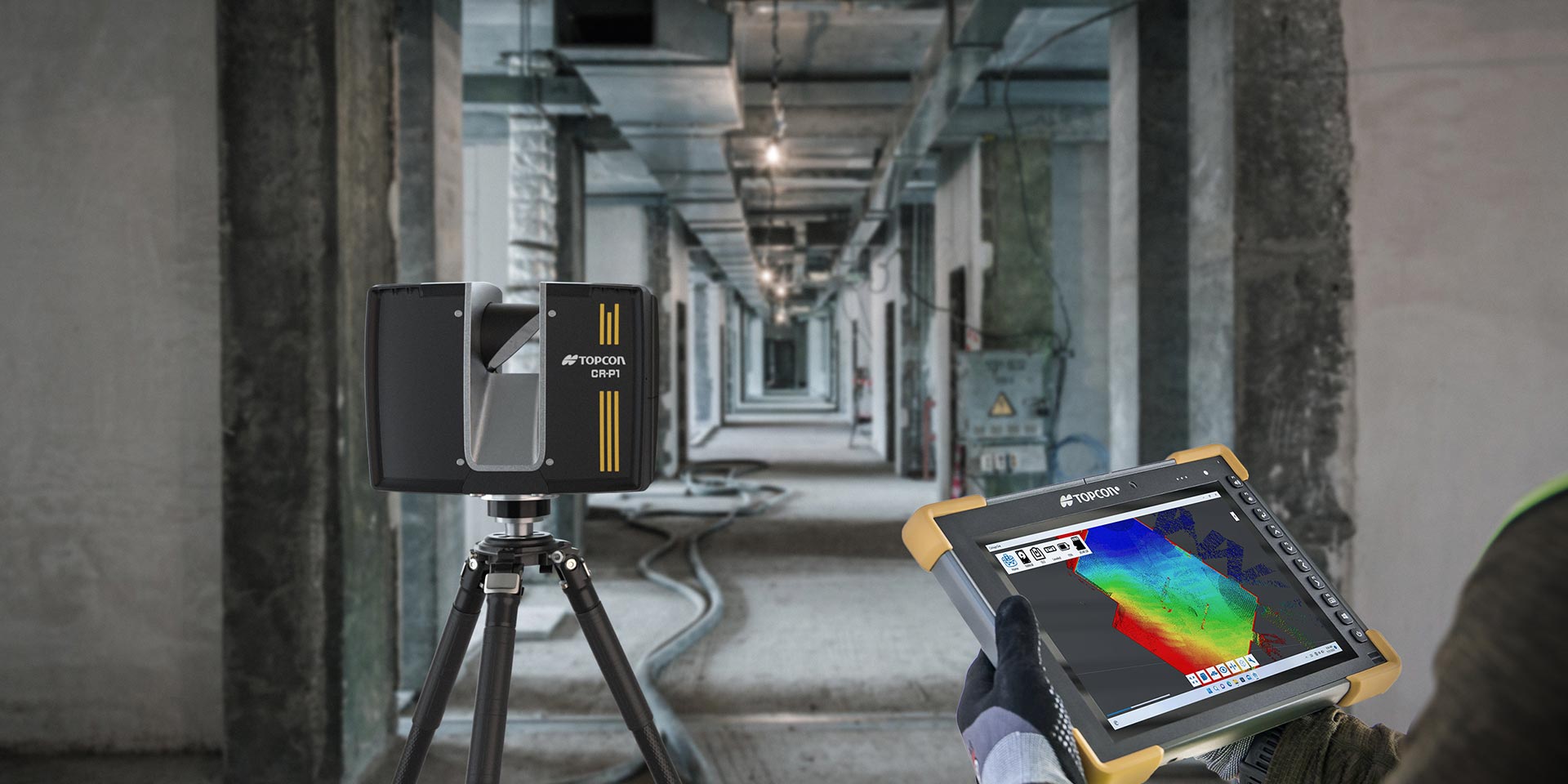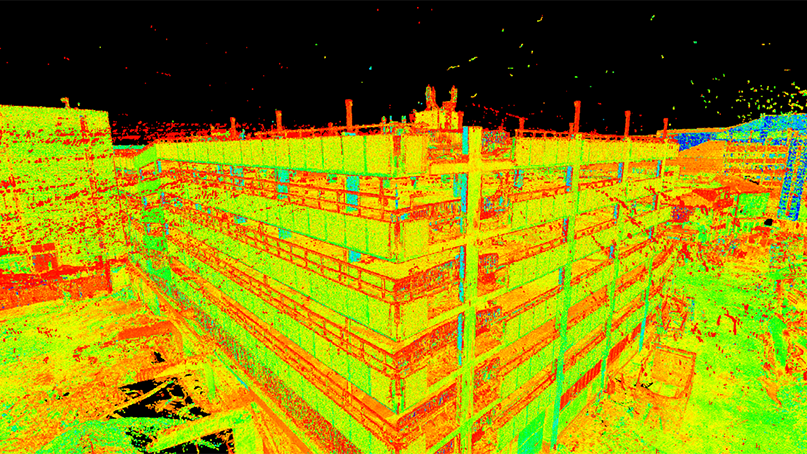Enhancing Production Processes: The Influence of 3D Laser Scanning on Quality Assurance
3D laser scanning modern technology is transforming quality assurance in production. By supplying high-resolution data and exact dimensions, it enables makers to identify inconsistencies from requirements with simplicity. This advancement not only simplifies evaluation processes but additionally boosts functional effectiveness. 3D Scanning. The execution of this technology comes with its own set of obstacles. Exploring these aspects reveals the more comprehensive effects for industries and the future landscape of production

Recognizing 3D Laser Scanning Technology
Although 3D laser scanning modern technology has advanced substantially in the last few years, its fundamental concept continues to be straightforward: catching the precise geometry of things utilizing laser beams. This technology employs laser light to gauge distances between the scanner and numerous factors on a things's surface. The information collected is then refined to develop a thorough 3D design, accurately mirroring the measurements and shapes of the checked item.
Normally, 3D laser scanners can be classified right into two major types: call and non-contact scanners. Contact scanners physically touch the challenge gather measurements, whereas non-contact scanners utilize laser light beams to capture information from a distance. The flexibility of this technology enables its application across numerous industries, consisting of building and construction, production, and design. Its capability to create high-resolution versions facilitates quality assurance, reverse design, and rapid prototyping, eventually improving layout precision and performance in manufacturing processes.
Benefits of 3D Laser Scanning in Manufacturing
As manufacturers look for to boost performance and precision in their procedures, the advantages of 3D laser scanning have become increasingly apparent. This cutting-edge technology enables rapid and extremely accurate measurements of complex geometries, substantially reducing the time needed for top quality checks. By recording detailed information, manufacturers can identify disparities early in the production process, consequently reducing waste and rework costs.
3D laser scanning assists in better layout validation, allowing engineers to compare as-built conditions with original specifications. This capability assures that any type of discrepancies are promptly resolved, improving total item high quality. On top of that, the technology supports the development of electronic twins, which can be made use of for simulations and process optimizations. Therefore, producers not just increase their functional efficiency however also improve their affordable advantage on the market. Generally, the assimilation of 3D laser scanning represents a transformative step towards achieving greater requirements in producing quality assurance.
Integration of 3D Laser Scanning Into High Quality Control
Incorporating 3D laser scanning into high quality control processes boosts the precision and effectiveness of assessments throughout production. This modern technology allows makers to capture thorough, high-resolution information of assemblies and elements, permitting precise measurements and comparisons versus layout specs. By using 3D laser scanning, organizations can determine discrepancies from resistances much more successfully, which is crucial for maintaining product integrity.

Real-World Applications and Situation Researches
Real-world applications of 3D laser scanning in manufacturing demonstrate its transformative influence throughout different industries. Aerospace business utilize this modern technology to conduct specific inspections of elements, ensuring they meet strict safety requirements. A notable instance involved a leading aircraft producer that used 3D laser scanning to enhance its top quality control procedures, considerably minimizing assessment times and errors.
In the auto industry, makers have actually carried out laser scanning to produce electronic twins of their automobiles, enabling real-time changes throughout production. One automobile company reported a 30% reduction in rework prices after incorporating this innovation right into their production line.
Additionally, in the customer products industry, companies are utilizing 3D laser scanning for rapid prototyping, permitting quicker models and boosted product styles. These applications illustrate how 3D laser scanning not just boosts precision yet additionally boosts efficiency and advancement throughout multiple production domains.
Overcoming Difficulties in Application
Carrying out 3D laser scanning in producing presents numerous obstacles that companies should navigate to fully realize its benefits. One considerable hurdle is the initial expense of tools and software program, which can discourage firms from embracing this innovation. Additionally, incorporating 3D laser scanning right into existing workflows see post requires overcoming resistance to transform among staff members, demanding comprehensive training programs to assure efficiency. Data administration also postures an obstacle, as the high volume of details produced by 3D scanning must be properly processed and evaluated to derive workable insights. Compatibility issues with legacy systems might hinder smooth assimilation, requiring prospective upgrades or alterations. Addressing these challenges is crucial for producers intending to improve top quality control and maximize manufacturing procedures. By creating clear methods for training, investment, and information monitoring, companies can reduce these challenges and launch the transformative possibility of 3D laser scanning in their procedures.
Future Fads in 3D Laser Scanning for Production
As manufacturing remains to develop, the integration of 3D laser scanning with increased automation is anticipated to change production procedures. Boosted information analytics will certainly play a crucial role in enhancing operations and improving quality assurance. These patterns highlight the possibility for higher efficiency and precision in making atmospheres.

Increased Automation Assimilation
Although the integration of automation in production has been progressive, the future of 3D laser scanning is positioned to accelerate this fad significantly. As producing processes become significantly complicated, the demand for exact, real-time measurements grows. 3D laser scanning modern technology provides automated information capture, lowering labor costs and reducing human error. This assimilation permits producers to simplify top quality control processes, allowing rapid discovery of discrepancies in production. Additionally, the positioning of 3D laser scanning with robotics and automated systems assists in smooth procedures, boosting overall efficiency. As producers embrace these advanced innovations, they can expect improved accuracy and performance, placing themselves competitively in a swiftly progressing market. The synergy between automation and 3D laser scanning marks a substantial jump onward in producing technology.
Boosted Information Analytics
The combination of automation has led the way for developments in information analytics within the domain name of 3D laser scanning. Suppliers are progressively leveraging advanced formulas and machine discovering strategies to examine huge datasets generated by laser scans. This improved data analytics ability enables real-time surveillance of making processes, enabling the recognition of discrepancies and problems better than conventional techniques. Anticipating analytics can visualize possible problems, considerably lowering downtime and enhancing total effectiveness. In addition, the capacity to picture information in three dimensions gives deeper understandings into manufacturing workflows, fostering far better decision-making. As 3D laser scanning technology continues to develop, the function of information analytics will certainly come to be progressively vital in driving innovation and preserving competitive benefit in manufacturing.
Frequently Asked Concerns
What Industries Advantage the A Lot Of From 3D Laser Scanning?
The markets that profit most from 3D laser scanning include manufacturing, construction, aerospace, auto, and health care. These fields utilize the innovation Read Full Article for precision dimensions, quality control, and efficient style procedures, substantially boosting overall functional efficiency.
Just How Does 3D Laser Scanning Contrast to Standard Measurement Approaches?
3D laser scanning uses greater precision and rate contrasted to standard measurement approaches. It captures thorough geometries quickly, decreasing human error and helping with much better evaluation, which eventually enhances overall quality check here assurance in various industries.
What Is the Expense of Executing 3D Laser Scanning Modern Technology?
The price of implementing 3D laser scanning modern technology differs considerably, typically ranging from $10,000 to $100,000, depending on software program, equipment, and training. Organizations must weigh these expenditures against possible efficiency and quality renovations.
Are There Particular Software Program Needs for 3D Laser Scanning?
Yes, 3D laser scanning requires certain software program, consisting of data handling and modeling applications. Usual options encompass CAD software program, point cloud handling devices, and specialized applications that help with the assimilation and analysis of scanned data for excellent results.
The length of time Does a Common 3D Laser Scanning Refine Take?
A normal 3D laser scanning process can take anywhere from a couple of mins to a number of hours, depending upon factors like the size of the things, complexity of the setting, and needed level of information for accuracy.
3D laser scanning innovation is transforming top quality control in production. 3D laser scanning technology has actually progressed considerably in current years, its fundamental concept continues to be simple: catching the precise geometry of items using laser beam of lights. Integrating 3D laser scanning right into quality control procedures improves the precision and performance of assessments throughout manufacturing (3D Scanning). 3D laser scanning modern technology provides automated information capture, minimizing labor expenses and reducing human error. The expense of applying 3D laser scanning technology varies significantly, usually varying from $10,000 to $100,000, depending on software, training, and equipment